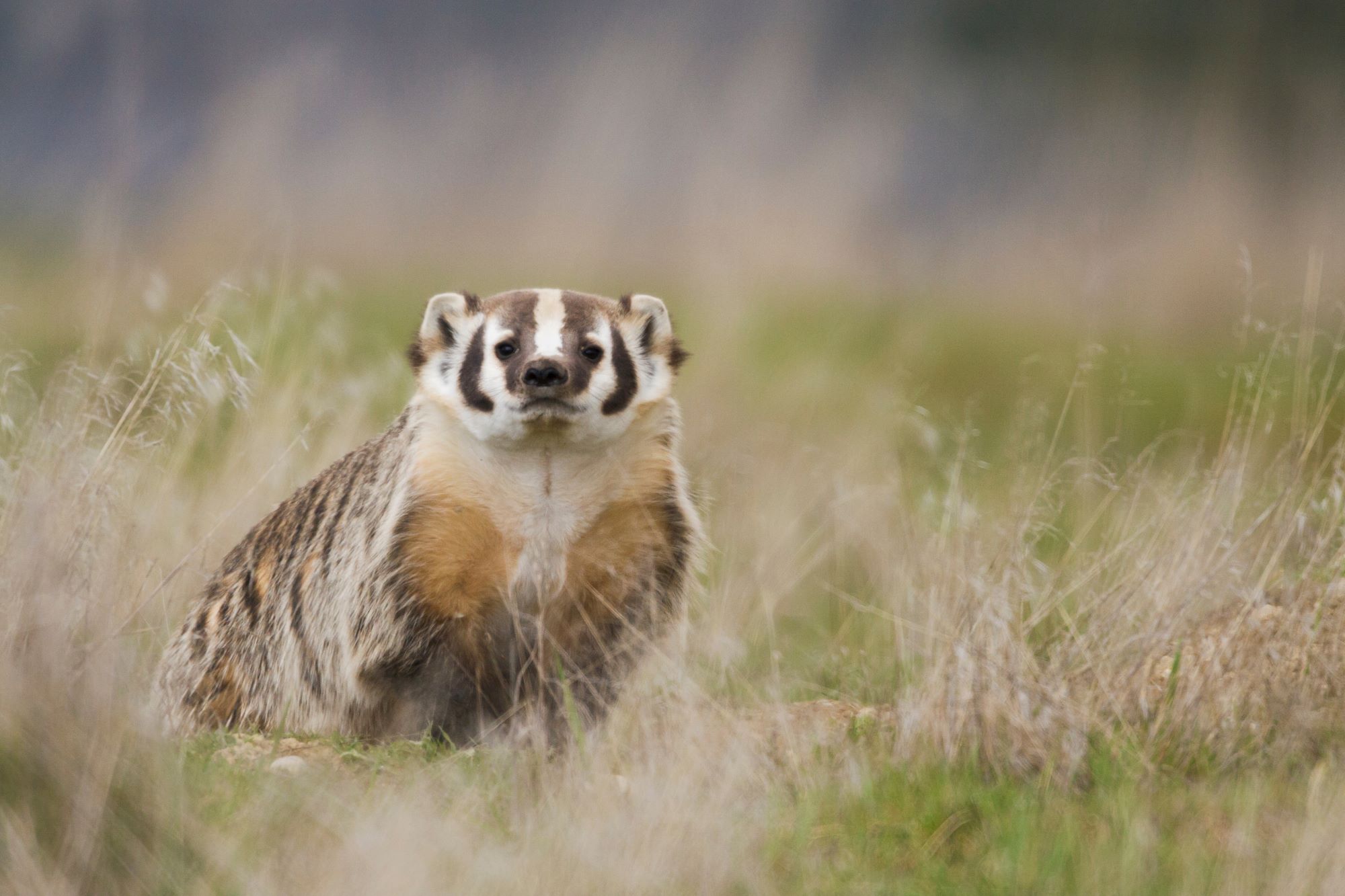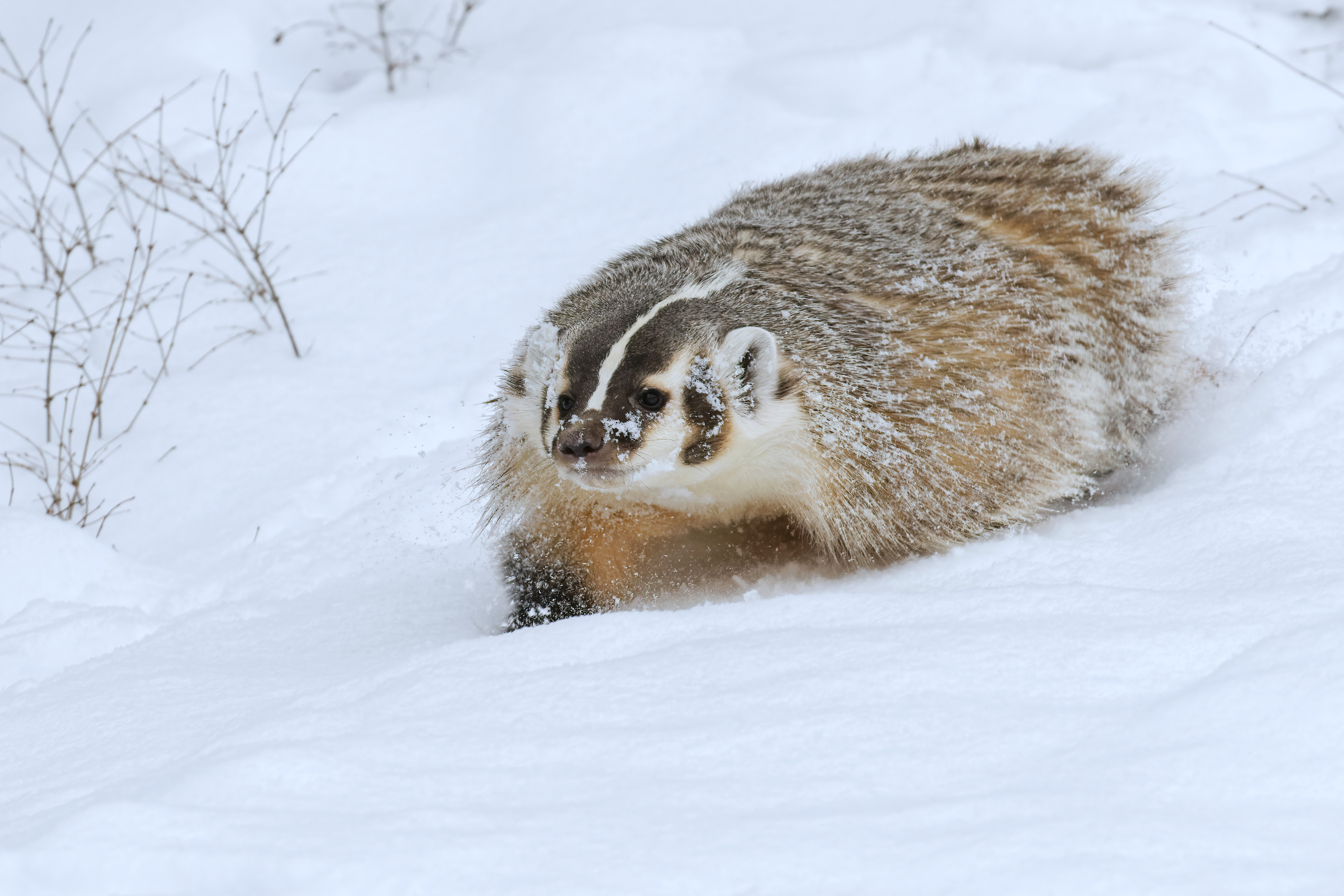
American Badgers in Utah
American badgers, scientifically known as Taxidea taxus, are a notable part of the wildlife in Utah, renowned for their burrowing abilities and distinctive appearance. These solitary mammals are primarily found in the open grasslands, agricultural areas, and desert scrublands of Utah, where their habitat preferences align with their hunting and burrowing behaviors.
Physically, American badgers have a robust, low-slung body, making them well-suited for digging. They have a broad and flat torso with short, powerful limbs, each equipped with long, sharp claws designed for excavating soil. Their coat is generally grayish with a unique facial pattern: a white stripe extends from the nose over the top of the head, and they have distinctive black patches or "badges" on their cheeks. This striking coloration provides a certain degree of camouflage in the grassy and sandy landscapes they inhabit.

One of the most remarkable aspects of American badgers is their digging ability. They excavate extensive burrow systems, or setts, which are used for shelter, rearing young, and escaping from predators. These burrows also play a significant ecological role, as they can alter soil composition and nutrient distribution, and provide habitats or shelters for other animal species.
In terms of diet, American badgers in Utah are carnivorous and highly efficient predators. They primarily feed on small mammals like rodents (including mice, voles, and ground squirrels), which they hunt using their acute sense of smell to locate prey in their burrows. This predatory behavior positions them as important controllers of rodent populations, contributing to the ecological balance in their habitats.
Badgers are generally nocturnal, spending the day in their burrows and emerging at night to hunt. They have a solitary nature except during the breeding season, which usually occurs in late summer or early fall. Females give birth to one litter per year, typically consisting of two to five cubs, in the spring.
In Utah, American badgers face various challenges. Habitat loss and fragmentation due to agricultural expansion and urban development have impacted their populations. Additionally, because they occasionally prey on small livestock or poultry, they can come into conflict with farmers and ranchers.
Conservation efforts for American badgers in Utah involve understanding their habitat requirements and mitigating human-wildlife conflicts. As a species, they are not currently endangered, but they are considered a species of concern in certain areas due to habitat changes and other environmental pressures.
Overall, American badgers are a key component of Utah's biodiversity, playing an important role in the ecosystem as both skilled predators and ecosystem engineers through their burrowing activities. Their presence in Utah's landscapes underscores the diversity and complexity of the state's wildlife and the importance of maintaining healthy and balanced ecosystems.